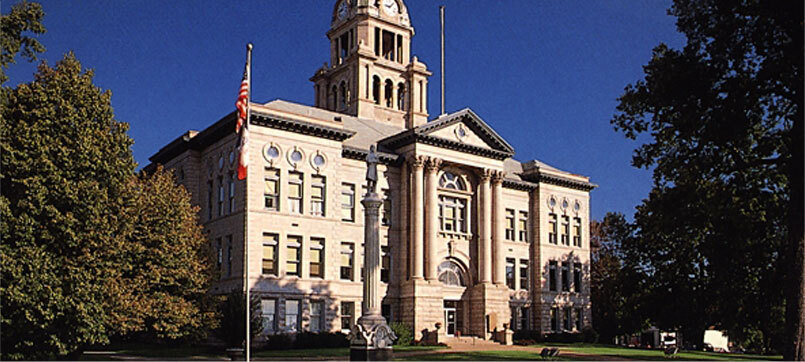Since the founding of our communities, organizations, businesses and citizens have stepped forward to build and serve their community. Click on any of the logos below to learn about those who made this website possible! If you would like to learn about becoming a sponsor CLICK HERE!

- County: Muscatine County, IA
- Region: Southeast IA
- Sponsors
- About Muscatine, IA
- Businesses
- Community Organizations
- Faith Organizations
- Festivals and Events
- Points of Interest
- Veterans
- Visit Website
Learn how to Contribute to any of the above categories.
No news yet. Got some news? Hit that NEW POST button!
About Muscatine, IA
Benjamin Nye is credited with having made the first settlement within the present County of Muscatine. This was in the spring of 1834. Mr. Nye laid out a town at the mouth of Pine Creek, situated about 12 miles northeast of Muscatine and named it Montpelier. Mr. Nye built a store and 3 separate mills with his last 1, Pine Creek Grist Mill, still standing today in Wildcat Den State Park. Pine Creek offered perfect water power and for many years the early residents of the county brought their grain to his mill, but the town itself was a failure.
Colonel George Davenport, who lived at the time in Rock Island, brought a stock of goods and established a trading post in what is now Muscatine, erecting a small log cabin and leaving the post under the charge of an agent.
The year 1835 saw a number of new settlers in this area. James W. Casey started a trading post below that of Colonel Davenport, known as Casey’s Wood Yard of Newburg. Colonel John Vanater who had been here several years before, returned and bought Colonel Davenport’s post. The Town of Bloomington was laid out in 1836 by Colonel Vanater who named the town for his hometown Bloomington, Indiana. This was the first survey by an act of the Wisconsin Territorial Legislature. Approved in January 8, 1837, Bloomington was made the county seat.
Bloomington was incorporated as a Town of the second class on January 23, 1839, and on May 6 its first president, Joseph Williams, was elected. The population of Bloomington in January 1839 was 71 and there were 33 buildings in the town. In November, there were 84 houses in the city.
Historians differ in their ideas of how Muscatine got its name. Some claim it was taken from the Mascoutin Indians who lived in this area in the 18th century. The name Mascoutin means fiery nation. Other historians claim the name came from the Indian name for what is now known as Muscatine Island. Because of the great difficulty in getting mail, (it was often sent to Bloomington, Illinois, or Bloomington, Indiana, and sometimes Burlington, Iowa), in 1850 the new name of Muscatine was adopted for both the town and county.
The name Muscatine is unique in that it is not used by any other city in the United States or the world.
The period from 1854 to 1875 was marked by the coming of the railroads and the rapid settlement and development of the state of Iowa. The Chicago, Rock Island, and Pacific Railroads were the first railroads to be built in Iowa reaching Rock Island, Illinois, in August 1854 and connecting with Iowa by a ferry crossing the Mississippi River. On November 20, 1855, the Mississippi and Missouri Railroad, which later became part of the Rock Island System, operated the first passenger train between Davenport and Muscatine. This was also the first passenger train operated in the state of Iowa.
Lumbering, saw and planning mills, sash and door factories, and other forms of woodworking were a major industry in Muscatine. When the nearby forests were cut off, lumber operators moved up the Mississippi River and brought the logs downstream by water. With the coming of the railroad, lumber was shipped in, but through all these changes various types of woodworking continued to be Muscatine’s major industry. Muscatine businessmen acquired forest lands and continued to operate saw mills in various parts of the county.
John Fred Boepple, a German immigrant with a flair for making buttons, came to Muscatine in 1887. By mistake, Boepple found that freshwater mussel shells, instead of animal horns, made a stronger button that more closely resembled the fashionable buttons made of expensive import marine shells. Nicholas Barry and his sons invented a machine which turned out better buttons with less labor. Muscatine soon became the world’s largest pearl button manufacturer, its factories employing half of the Muscatine workforce during the turn of the century, earning it the name of Pearl Button Capital of the World. In 1905, more than 1.5 billion pearl buttons were made in Muscatine. Today, nearly all buttons are made from plastic.
In 1892, after a nationwide investigation, H.J. Heinz Company decided to locate 1 of their principal canning plants in Muscatine, being the first expansion outside of Pittsburgh. Numerous additions have been made to this plant making it now the largest Heinz plant outside of Pittsburgh and the largest canning plant between the Mississippi River and the Rocky Mountains.
The fertile soils of Muscatine make the area well known for producing some the highest quality agricultural products in the world with the famous Muscatine Melon being perhaps the most recognized.
Muscatine acquired its present name in 1850. On February 21, 1851, Muscatine was incorporated by a special act of the Iowa State Legislature and is 1 of 4 Iowa cities that continue to operate under such special authority.
The city is the county seat of Muscatine County and has a mayor-council form of government. Day-to-day operations of the city are carried out under the supervision of a city administrator.
We remain proud of our heritage and the strong industrial base present today. Mark Twain who lived in Muscatine in 1854, once wrote “I remember Muscatine for its summer sunsets. I have never seen any on either side of the ocean that equaled them.” Our noted sunsets, joined together with the rolling terrain, quiet neighborhoods, and strong sense of family values gives Muscatine a special personality all its own.
Businesses of Muscatine, IA
The businesses of our towns are truly the lifeblood of each community, click on any businesses below to learn about them, to learn how to add your business to your town and county page CLICK HERE!
Muscatine County, IA
Visit our county page and you will find information about our town and county's points of interest, festivals/events and faith community. You also will learn about the community organizations that have built and continue to build strong communities (chambers, community groups, and departments, etc) and much more when you visit the Muscatine County, IA page.


